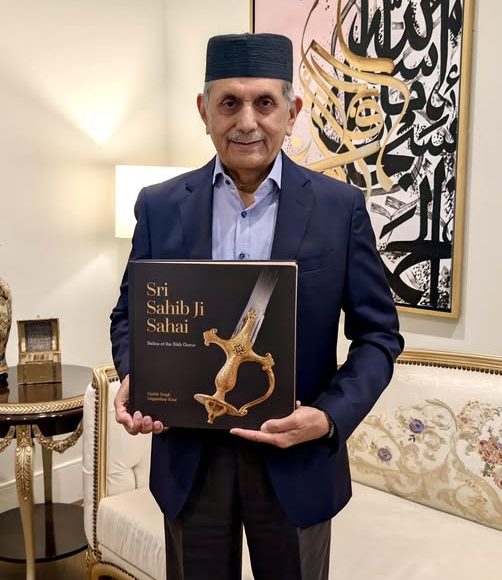KALHA, RAI, feudatory chief of Raikot in Ludhiana district of the Punjab, was a contemporary of Guru Gobind Singh (1666-1708). Converted from Hinduism to Islam, the Rai`s family were still among the admirers of the Gurus. When Guru Gobind Singh, after his escape from Chamkaur, was passing through his territory, Rai Kalha received him warmly and served him with devotion. He sent one of his own men to Sirhind to bring news of the Guru`s mother and his two younger sons, while he himself attended upon the Guru who was then putting up at Lammari Jatpura. As the messenger returned and narrated how the Guru`s sons had been executed under the orders of the Sirhind official, Rai Kalha was overwhelmed with grief.
Guru Gobind Singh consoled him and before departing bestowed upon him three gifts a sword, a waterjug and a rack to hold a religious book for recitation. Kalha kept these articles as sacred relics and so did his son after him. But his grandson is said to have put on the sword during chase. According to Bhai Santokh Singh, Sri Gur Pratap Suraj Granth, he hurt himself with it while attempting to kill a deer and died of the wound thus sustained. In British days, a descendant of the family presented the sword to the English deputy commissioner of Ludhiana. It was ultimately sent to England, where it was kept in the British Museum. The other two relics were preserved in the family until 1947 when it migrated to Pakistan.
References :
1. Santokh Singh, Bhai, Sri Gur Pratap Suraj Granth Amritsar, 1927-33
2. Sukha Singh, Bhai, Gurbilas Dasvin Patshahi. Lahore, 1912
3. Macauliffe, Max Arthur, The Sikh Religion. Oxford, 1909
Rai Aziz Ullah Khan, direct descendant of Rai Kalha, with a copy of ‘Sri Sahib Ji Sahai.’
Rai Kalha – feudatory chief of Raikot in Ludhiana district of the Panjab, was a contemporary of Guru Gobind Singh (1666-1708). Rai Kalha’s daughter was married to Alam Khan, son of Nihang Khan and Guru Gobind Singh had attended the wedding. When Guru Gobind Singh, after his escape from Chamkaur, was passing through his territory, Rai Kalha received him warmly and served him with devotion. He sent one of his own men (Nura Mahi) to Sirhind to bring news of Guru Sahib’s mother and his two younger sons, while he himself attended upon the Guru who was then putting up at Lamman-Jatpura. As the messenger returned and narrated how the Guru’s sons had been executed under the orders of the Sirhind official, Rai Kalha was overwhelmed with grief. Guru Gobind Singh consoled him and before departing bestowed upon him three gifts – a sword, gangasagar (a pitcher) and a wooden rack to hold a religious book for recitation. Rai Kalha kept these articles as sacred relics and so did his son after him. In British days, the sword was appropriated by the staff of the English deputy commissioner of Ludhiana. It was ultimately sent to England, where it was kept in the British Museum. The other two relics were preserved in the family until 1947 when the family migrated to Pakistan.
Rai Aziz Ullah Khan, grandson of Khan Bahadur Rai Inayat Khan and the heir of the Rai family, is the present custodian of Gangasagar. His illustrious family has cherished this sacred gift of Guru Gobind Singh with great respect and care for more than 300 years. The real significance of the Gangasagar is not in any miracle that is sometimes attached to it. The real significance is in what the Gangasagar stands for. It represents an appreciation of fearless love and respect shown by the Rai family towards the Guru. Even more remarkably, the Rai family accorded the Guru a warm welcome against the obvious risk of serious reprisals from rulers of the day. In this sense, the Gangasagar is a symbol of love. It reminds us, and will continue to remind all those who are fortunate enough to see it in the future, of love that transcends the artificial boundaries of religion, race or caste. It is a symbol of love that embraces the entire humanity. It expresses the oneness of humanity that was the essence of Guru Gobind Singh’s life and teachings.



